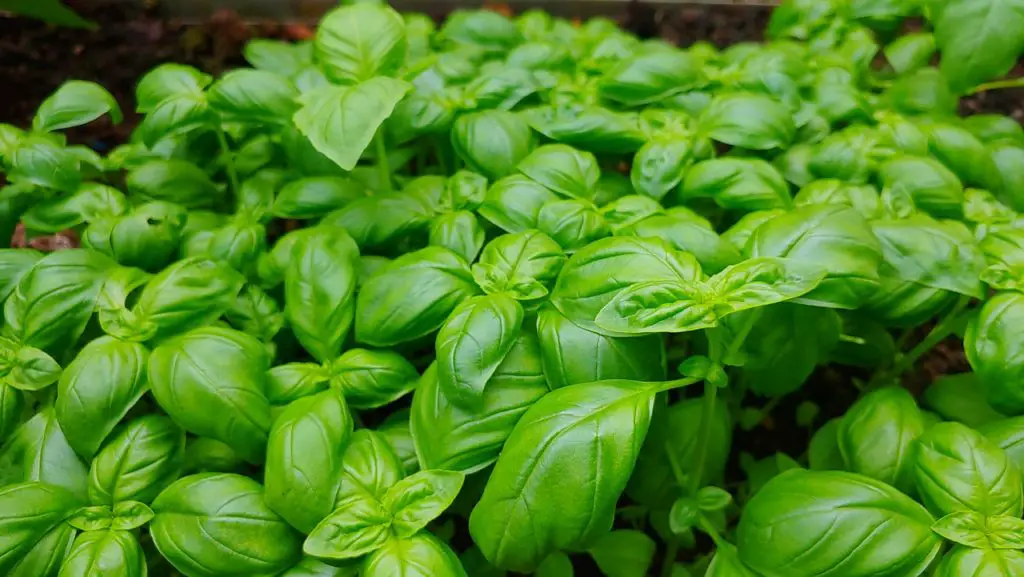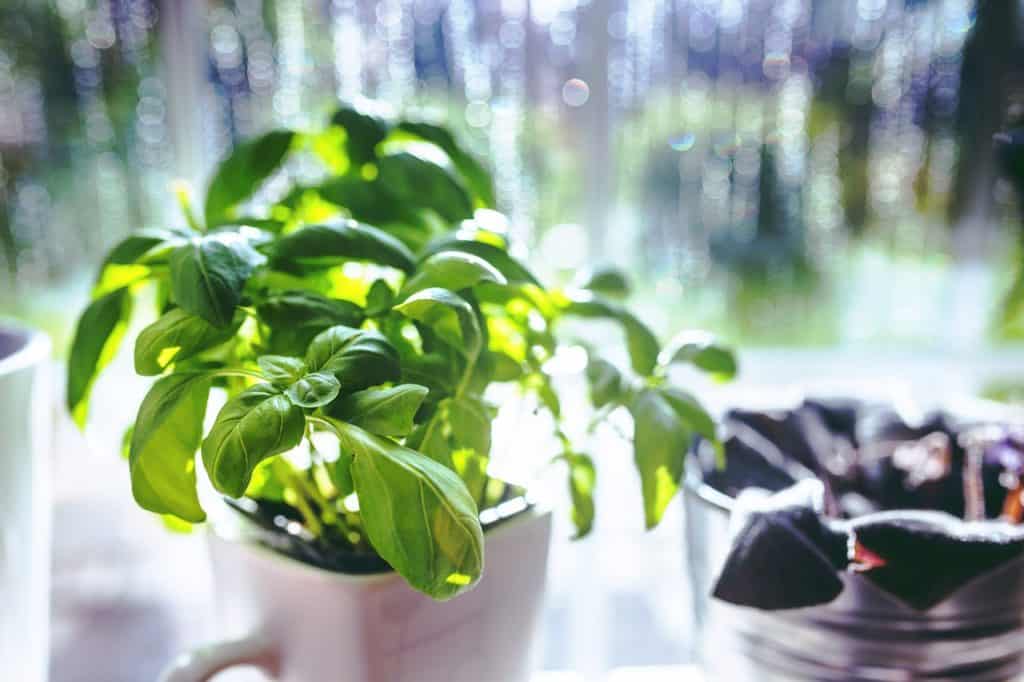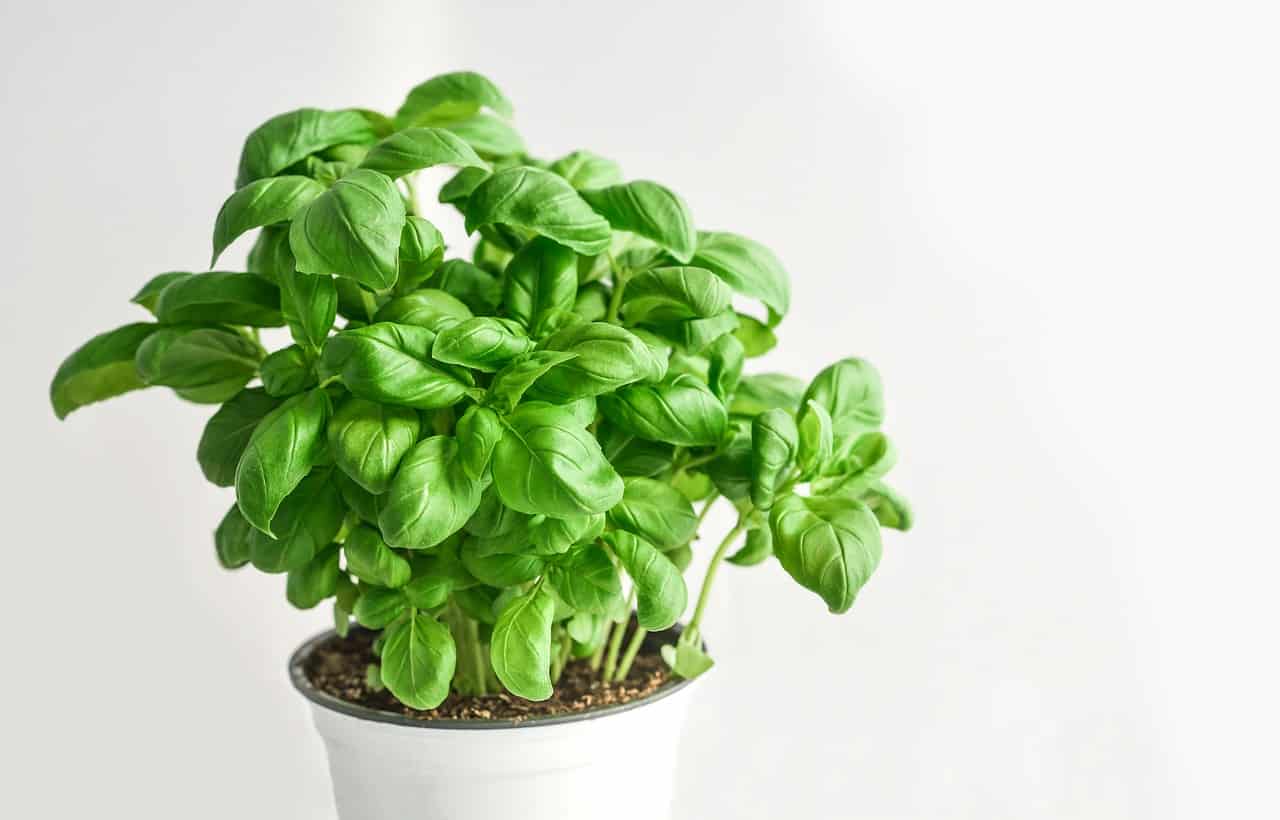
There are a lot of herbs out there to grow, and basil might just be one of the most rewarding ones. To make basil bushier and more prolific, regular harvesting is key. Start by pinching off the tips of the plants when they are about 6 inches tall to encourage lateral growth and prevent early flowering. Continue to harvest leaves regularly, focusing on the upper parts of the plant to promote a fuller, bushier appearance. Avoid cutting the woody, lower stems, as new growth primarily occurs in the softer, green parts. This method not only increases the yield but also extends the life of your basil plants, ensuring a continuous supply of fresh, aromatic leaves for your summer dishes, pesto, and herbal vinegar. Remember, the more you harvest, the more the plant will produce, so don’t be shy about using your basil generously throughout the growing season.
A Quick Guide To Growing Basil
Growing basil is a simple and rewarding endeavor perfect for any garden or windowsill. Start by planting basil seeds indoors in well-draining soil 6-8 weeks before the last frost, or sow them directly outside in a sunny spot once the danger of frost has passed. Basil loves warmth and requires at least 6-8 hours of direct sunlight daily. Keep the soil consistently moist but not waterlogged, and ensure good air circulation around plants to prevent disease. Pinch off the tops when plants are 6 inches tall to encourage bushier growth and prevent early flowering. Regular harvesting of leaves will promote continuous growth, allowing you to enjoy fresh basil throughout the season.
Planting Basil
Planting basil starts with choosing a sunny location, as the herb thrives in 6-8 hours of direct sunlight daily. Sow seeds or plant seedlings in well-draining soil with a neutral pH after the last frost when the soil has warmed. Space plants or thin seedlings to about 12-18 inches apart to ensure ample air circulation. Keep the soil consistently moist, especially during dry spells, but avoid waterlogging. With proper care, your basil will grow into a lush, aromatic plant, ready to enhance your culinary creations with its fresh leaves.
Caring For Basil
Caring for basil involves ensuring it receives ample sunlight, at least 6-8 hours daily, and consistent watering to keep the soil moist but not soggy. Plant in well-draining soil to prevent root rot and space plants adequately for good air circulation. Fertilize lightly to encourage growth without compromising flavor. Regularly pinch off the tips and remove any flowers to promote bushier growth and prevent bolting. With these simple care tips, your basil will remain healthy, vibrant, and flavorful throughout the growing season.
How To Make Basil Bushier
To make basil bushier, regularly pinch off the top leaves above a leaf node, stimulating lateral growth. This encourages branching and denser foliage. It’s best to prune before flowering to prevent the plant from bolting. Ensure your basil gets adequate sunlight, water, and nutrients. Transplanting to a larger pot can also promote bushier growth if the plant becomes too crowded.
Pruning Basil Seedlings For Growth
To encourage bushier basil plants, the first pruning is crucial once seedlings reach 4-6 inches tall with several leaf sets. Carefully trim the top stem and a few upper leaves just above a node, where two larger leaves and tiny new ones emerge from the stem. This precise cut stimulates the small leaves to develop into two new branches, doubling the plant’s volume. This technique not only enhances the plant’s appearance but also increases leaf production, providing more fresh basil for your culinary uses. Regular subsequent prunings, following this method, will maintain the basil’s lush, bushy growth throughout the growing season.
How To Make Your Basil Plant Bushier
To make your basil plant bushier, regularly pinch off the topmost leaves above a leaf node, stimulating lateral growth. This pruning encourages branching and denser foliage. Ensure you prune before flowering to prevent bolting. Provide adequate sunlight, water, and nutrients, and transplant to a larger pot if necessary to accommodate growth. Maintaining a consistent pruning schedule and proper care will promote a fuller, bushier basil plant for your culinary needs.
How To Pinch Basil
To pinch basil, wait until the plant has at least three sets of true leaves. Using your fingertips or scissors, gently remove the top set of leaves just above a leaf node, where new leaves are emerging. This action encourages the plant to branch out from the sides, leading to a fuller, bushier appearance. Regular pinching, especially before the plant flowers, will promote continuous leaf production and extend the harvest period, enhancing your basil’s yield and flavor.

What To Do With Basil
Utilize fresh basil in various culinary creations, including pasta dishes, salads, sandwiches, and soups, for a burst of aromatic flavor. It can also be made into pesto, infused into oils or vinegar, or dried for long-term storage.
Storing Basil
To store basil, trim the stems and place them in a jar of water on the counter like a bouquet. Alternatively, wrap basil in a damp paper towel and store it in a perforated plastic bag in the refrigerator’s crisper drawer. For long-term storage, freeze chopped basil in ice cube trays with olive oil or water.
Preserving Basil
Preserve basil by making flavorful basil pesto with garlic, pine nuts, Parmesan cheese, and olive oil. Freeze pesto in ice cube trays for convenient portions. Alternatively, dry basil leaves by hanging them upside down in a well-ventilated area until brittle, then store in airtight containers. These methods ensure year-round access to the vibrant taste of basil.

